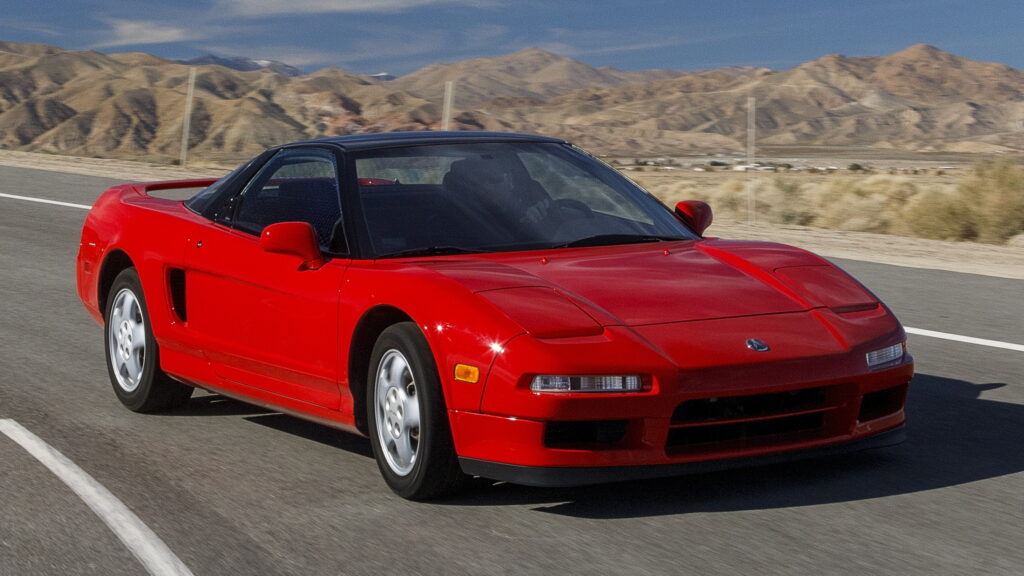Honda is a company with an impressive track record. Within two years of creating its first car, it won its first Formula 1 race. Less than 20 years later, it was dominating the sport (albeit as an engine supplier), beating the likes of Ferrari on track. Full of confidence, it decided to try beating the Italian automaker on the road, too.
The result was the first-generation Acura (or Honda, depending on where you’re reading this) NSX. A mid-engine supercar designed with the help of its champion driver, Ayrton Senna, Honda’s engineers pulled out all the stops in creating the car.
So determined was the brand to take on Ferrari, it hired its de facto design firm, Pininfarina, to draw the early design studies. Meanwhile, its engineers were busy creating its first production aluminum monocoque, as Jason Cammisa relays in a new video for Hagerty.
To ensure that the new unit could handle the strains of driving, Honda turned to the Cray-2, the fastest supercomputer on earth at the time. Despite that, Senna called the car fragile, so the automaker set up shop at the Nürburgring and set about finding chassis weaknesses, fixing them, and then going back to the supercomputer to make them lighter.
Read: Low-Mileage 2005 Acura NSX Is Just About Perfect In Long Beach Blue Pearl

That helped create a car that was light enough to be powered by a 3.0-liter naturally-aspirated V6. Although a glaring oversight from the earliest prototypes, the production NSX would eventually become the first Honda in the U.S. car to feature VTEC, its now legendary camshaft technology.
When it was finally ready for the first independent test drives, the engine could rev to 8,000 rpm and made 270 hp (201 kW/274 PS). While that may not sound massive today, the car was so light that it could out-accelerate the equivalent Ferrari by half a second.
The chassis was so well sorted that it could outperform most Italian supercars on the track, too. That made it a sensation with critics. Unfortunately, as in the film world, sometimes rave reviews don’t translate to box office success.
Just three years after it launched, the NSX was being outsold 10 to 1 by the Ferrari it was designed to bury. As one reviewer put it, the Japanese car was driven with “the brain and fingertips. With a Ferrari or Lamborghini it is bravado and biceps.”
While many suggest that the car was too good, and therefore dull, for supercar owners, I think that its status as a cult classic and a critical darling, as well as the influence it had in making later Ferraris better, also points to something a little more nuanced. In addition to insulting Ferrari, the NSX insulted Ferrari’s buyers: rich people who were happy with the status quo because it was working for them. Meanwhile, those who wanted to thumb their nose at the rich simply couldn’t afford to.




